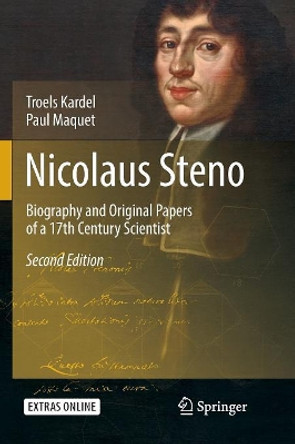Description
Nicolaus Steno (1638-1686) was a renowned anatomist in his lifetime. He reformed the anatomical understanding of glands, argued that the heart was a muscle, renamed the so-called female testicles as ovaries, and developed a mathematical model for understanding muscle contraction-discoveries that were fundamental to the fields of anatomy and physiology. However, other aspects of Steno's life have come to define him: his claim that mountains' strata reveal the history of the Earth and his conversion to Catholicism as a practicing scientist. This excessive attention to his geological discoveries and to asking whether science and religion are compatible, Nuno Castel-Branco argues, has obscured his significant accomplishments as an anatomist. The Traveling Anatomist thus restores Steno to his rightful place as a crucial figure in early modern science.
Using Steno's extensive travels as a framework, this book depicts him as an active participant in the Republic of Letters. Castel-Branco traverses Leiden, Paris, Copenhagen, Florence, and Rome as he follows Steno in his sojourns through different scientific academies, courts, and artisanal workshops. There he developed new friends, some of whom were women, with whom he researched and exchanged ideas. Drawing on Steno's books, correspondence, and novel archival material, Castel-Branco invites us to approach Steno and his accomplishments in anatomy, mathematics, and geology through the eyes of his contemporaries. Doing so, Castel-Branco reconstructs the rich and overlapping worlds of scientific disciplines that shaped Steno's work, revealing the richness of interdisciplinary research in early modern intellectual life. And through Steno, he illustrates larger developments and new networks of significance in mid-seventeenth-century science. By focusing on ideas, scientific genres, institutions, and friendships, Castel-Branco offers a way others might also productively study science from the early modern period until today.
About the Author
Nuno Castel-Branco is a research fellow of All Souls College at the University of Oxford.
Reviews
"A marvelously detailed account of the life and thought of Steno, one of the most significant but least-known figures of the seventeenth century, who used mathematics to understand muscles, made the first geological investigation of fossils, and convinced people that women have eggs. Deploying novel archival sources and taking us through a close reading of Steno's life and times, Castel-Branco explores Steno's place in the rich mosaic of European ideas, showing how he grappled with the power of anatomy and mathematics and their interaction with the pull of religion. Highly recommended!" -- Matthew Cobb, author of "As Gods: A Moral History of the Genetic Age"
"In this deeply researched book, we follow the young Steno through the courts, academies, and salons of Europe during the golden age of the new science. Castel-Branco offers a vivid tapestry of people, places, and things that conveys the excitement and complexity of this era." -- Anita Guerrini, author of "Experimenting with Humans and Animals: From Aristotle to CRISPR"
"A new and truly impressive intellectual portrait of a protagonist of seventeenth-century science. Beautifully detailed in text and images, this intensively researched book traces Steno's journeys across the intersecting disciplines, cultures, and religions of Europe at one of its most challenging and creative times. Whether anatomizing glands and muscles or explaining ovaries and fossils, Steno used what Castel-Branco calls 'focused interdisciplinarity' to pursue epistemic 'certainty' in a life-long devotion to incessant, open-ended inquiry." -- Gianna Pomata, coeditor of "Historia: Empiricism and Erudition in Early Modern Europe"
Book Information
ISBN 9780226842271
Author Nuno Castel-Branco
Format Hardback
Page Count 320
Imprint University of Chicago Press
Publisher The University of Chicago Press
Weight(grams) 454g




